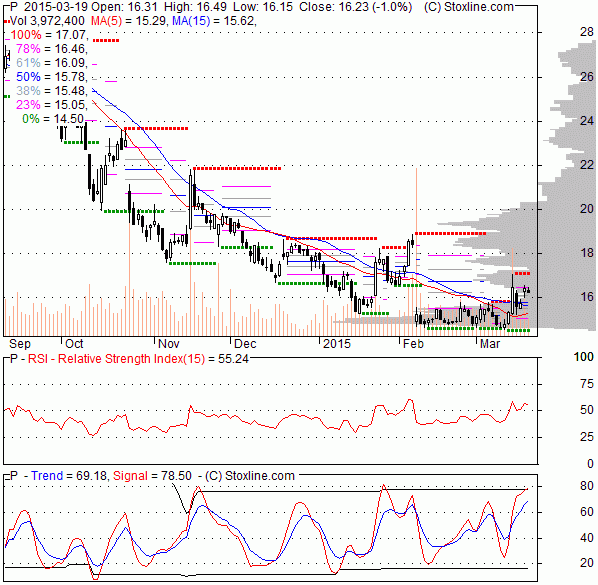Stock Basics The P
Post on: 11 Июнь, 2015 No Comment

Investors like ratios and the P/E ratio (Price/Earnings ratio) is the most popular. Some of the most successful value investors use the P/E ratio (along with other metrics) as a starting point in their research to find stocks that continuously beat the market. The reason is value investors tend to look for good quality stocks with lower than normal P/E ratios.
Its not just value investors that use this ratio. The P/E ratio is used to argue under and overpriced stocks by every investment strategy. sometimes, far too often.
What is the P/E Ratio?
Any good financial site will list the P/E ratio right along side the stock price and its the best place to find it. The P/E or price to earnings is the simplest way to value a stock. What the P/E ratio tells you is how much someone is willing to pay for $1 of earnings. Which makes it a better representative of a stock than price alone.
Since the goal of investing is to find companies that make money and grow their future earnings, the P/E ratio can come in very handy. It shows how much investors are willing to pay for a companys earnings now, but also how much theyre willing to pay for the potential growth in future earnings.
Many stock screens use P/E as a primary filter, but its just a starting point for any good research strategy.
P/E Formulas
The formula for P/E is simple division. Its easily calculated by taking the current stock price divided by the earnings per share or Stock Price/Earnings Per Share.
- Trailing P/E is what you most often see posted on all the major financial sites. The trailing P/E is the Stock Price/Earnings Per Share over the last 12 months. Basically, if it says P/E, you can assume its the Trailing P/E. Otherwise, it will be labeled one of the two below.
- Current P/E uses analysts earnings estimates for the current year, rather than actual earnings numbers. This is the Stock Price/Earnings Estimates for the current year. Its uses are limited since analyst estimates are best guesses and hardly reliable.
- Forward P/E is similar to Current P/E only it uses next years earnings estimates. It becomes Stock Price/Earnings Estimates for next year. It should give you a sense of the expected earnings growth in the coming year. Again, these are estimates of what the company might do.
How To Use It

Many investors like to put their money in growing companies. High growth companies tend to have higher P/E ratios than slower growth companies. What if a high growth company has a low P/E? It can mean one of two things. Either the company hit a snag in its growth and investors dont believe that it can continue to grow at such a high rate any longer. Or, the stock is completely undervalued and those same investors are wrong.
Finding the undervalued bargains is the goal of a value strategy. Its these diamonds in the rough stocks that end up consistently outperforming the markets. The value investor will use a P/E ratio as a starting point when making a relative valuation.
The companys industry and growth rate are the other two factors that come into play when looking at the P/E ratio. You get an idea how a stock stacks up by comparing its P/E to other companies or competitors in the same industry. If the company is expected to grow at a faster rate than its competition, it should have a higher P/E ratio than the industry average. Alternatively, it should have a lower P/E if its expected to grow slower.
Not all industries are the same either. Utility companies have historically had some of the lowest P/Es while technology companies have had some of the highest. So comparing P/Es of the two is useless.
The companys growth rate is the second factor. There comes a point in every companys life cycle that it can no longer sustain a high growth rate. Youll need to ask how fast has the company been growing and can it continue to grow at that same rate or faster? If the answer is no. then the P/E ratio is too high, and the stock price will need to drop to show a slower growth in earnings.
But if the answer is yes. you might have an investment on your hands. This is also the point where a growth strategy gets interesting.
How High Is Too High
The question every growth investor deals with is can the company grow anymore? Its usually followed with by how much? If growth doesnt look good, the next step usually involves selling most or all of their shares. Maybe its too early or maybe its the perfect time (its rarely the latter).
Of course, if good times are ahead, selling is the last thing you want to do. Theres no perfect equation that can tell us when a company has reached its peak in growth. And there isnt a perfect number for P/E either. That is why the ratio is used with other metrics like the PEG ratio (Price to Earnings to Growth ratio) to make investment decisions.
Im certain there were investors that sold their Coca-Cola, Microsoft, and McDonalds shares after the first few years thinking theres no way these companies will continue to grow. But they found out the high growth period hadnt even started for those companies and when it did, it lasted for years if not decades.
Conclusion
Money is made when you find stocks of companies that are still in the early stages of growth. It gets better when you buy shares at a better than fair price. Thats why you cant rely on P/E alone to make investment decisions. While other investors see an overvalued stock with a high P/E ratio, the smart investor digs further and finds a gem.














